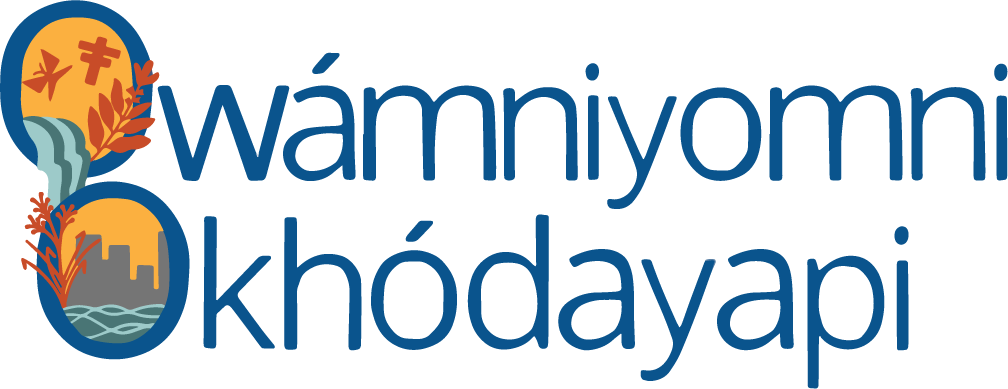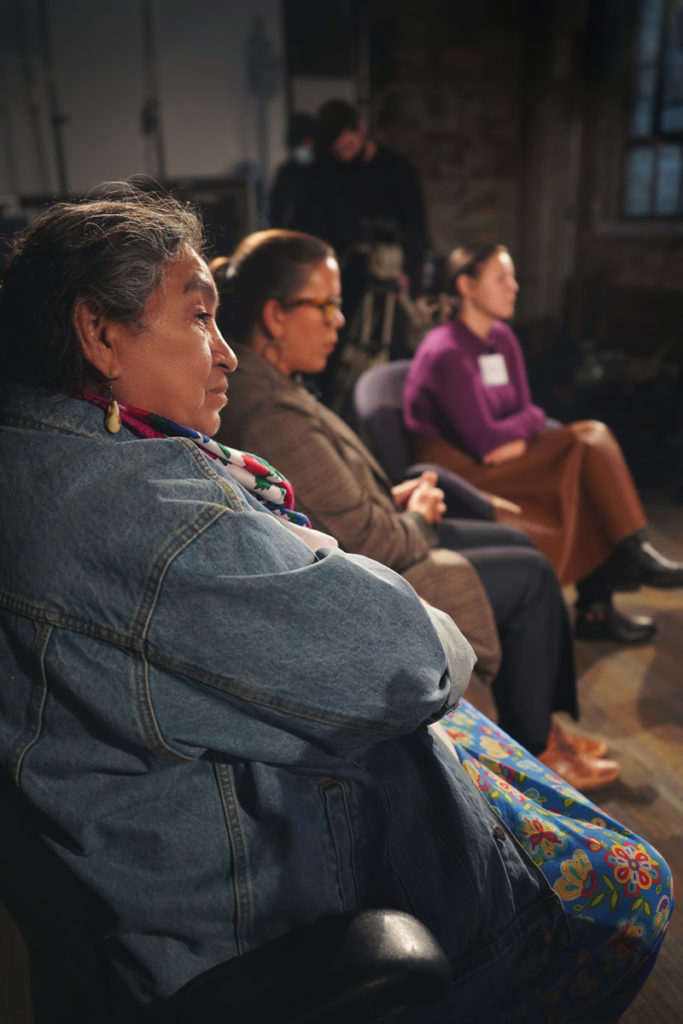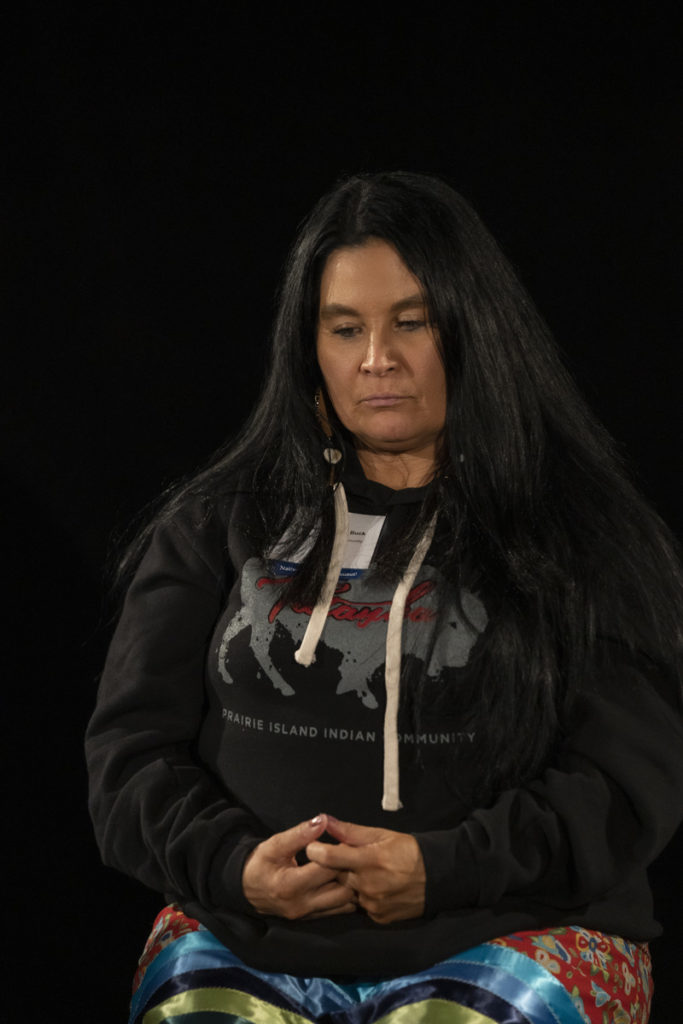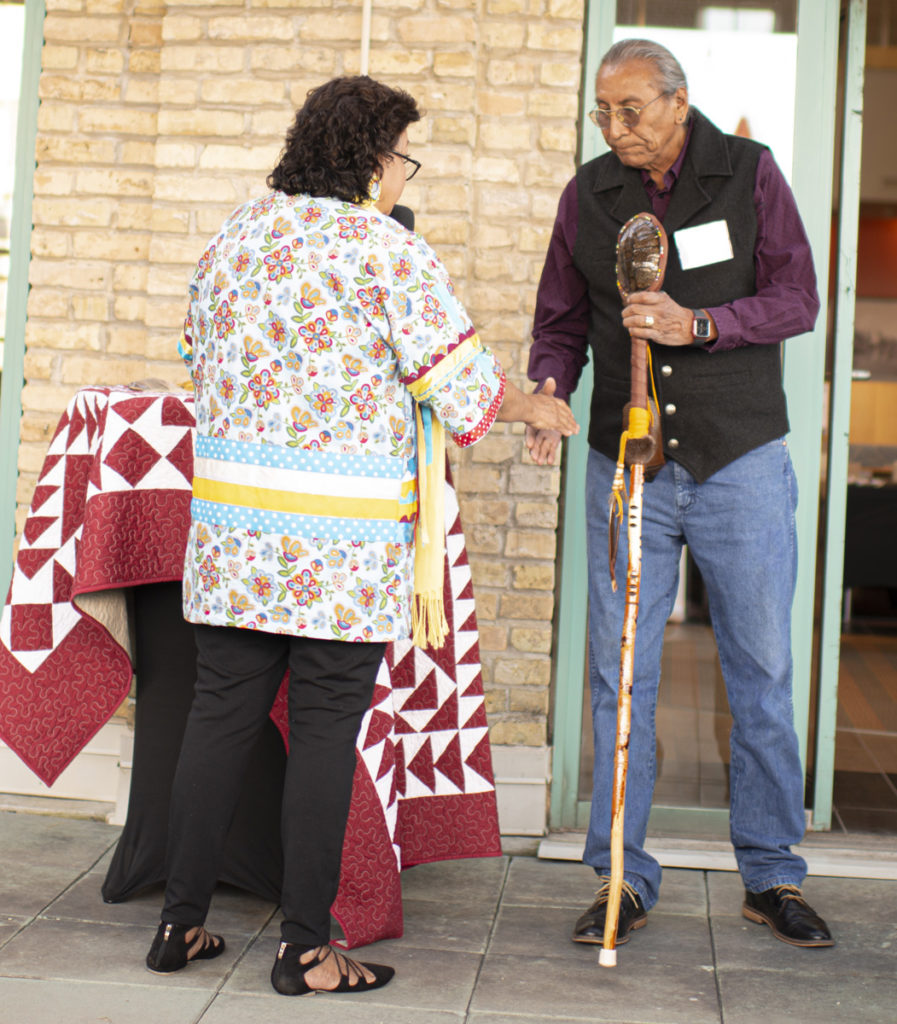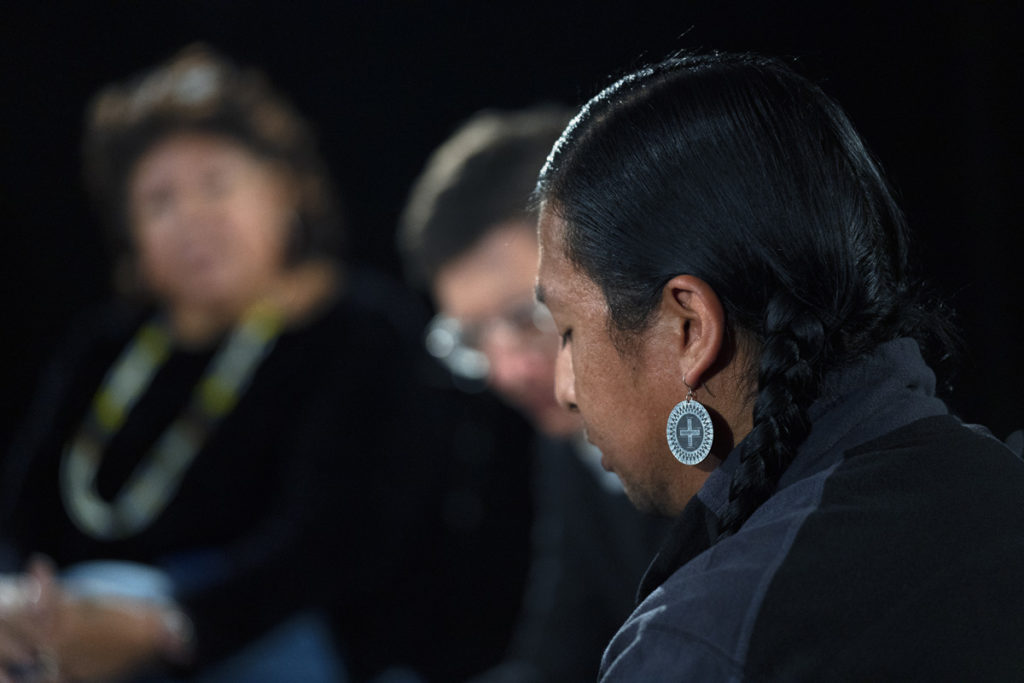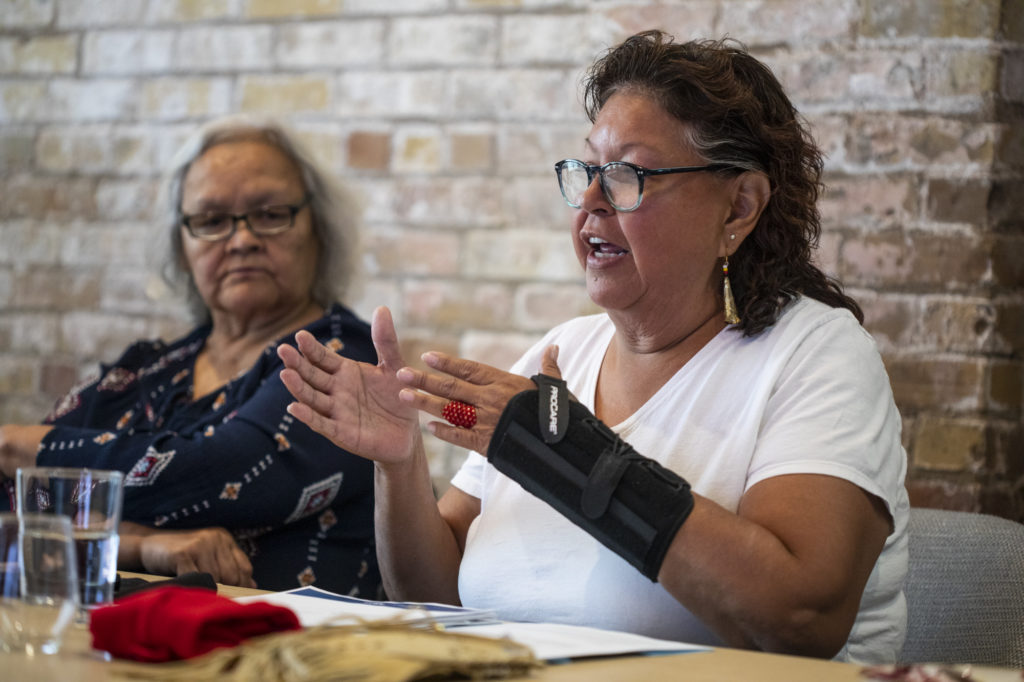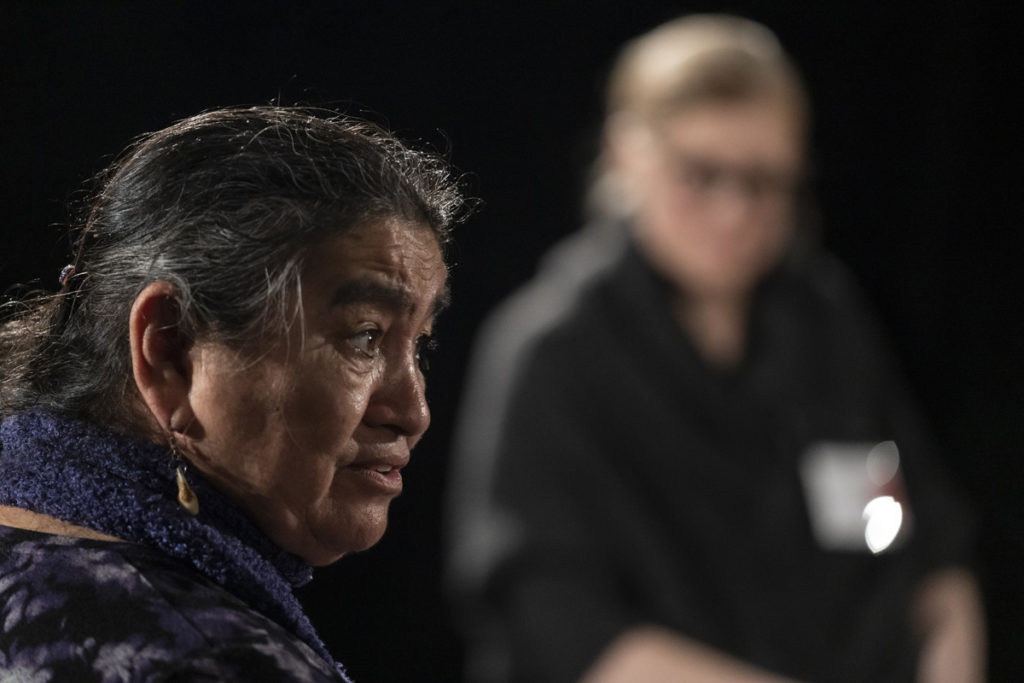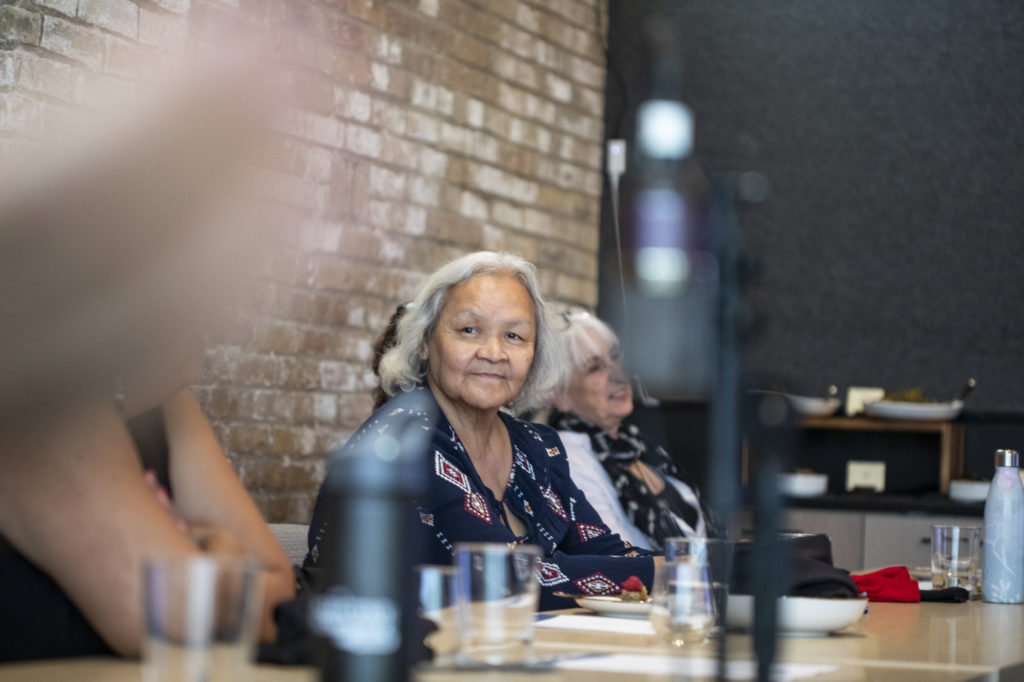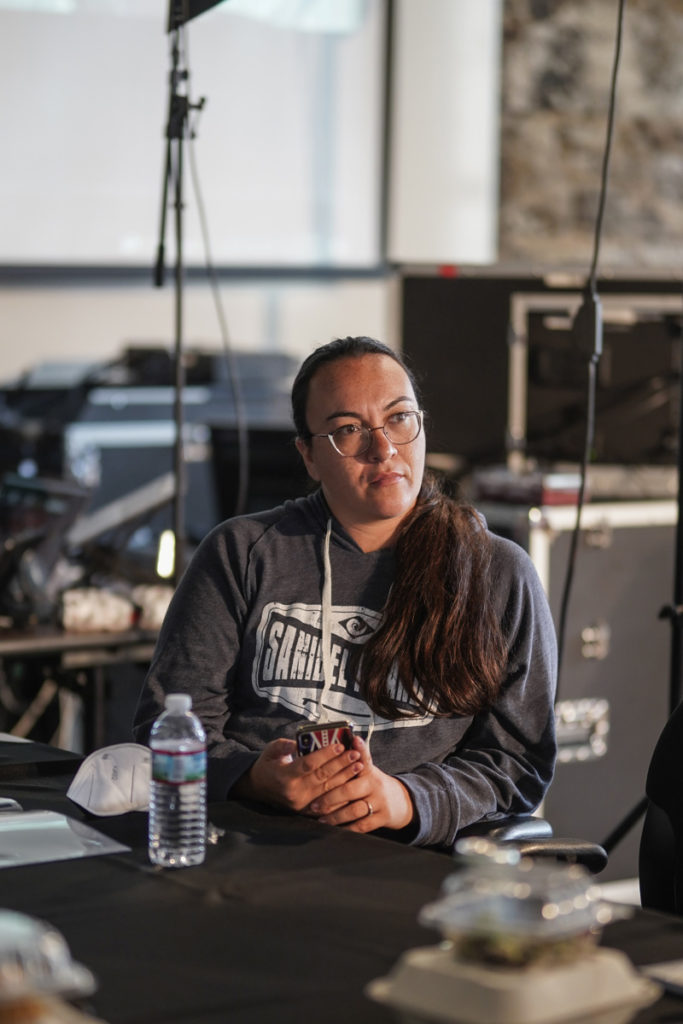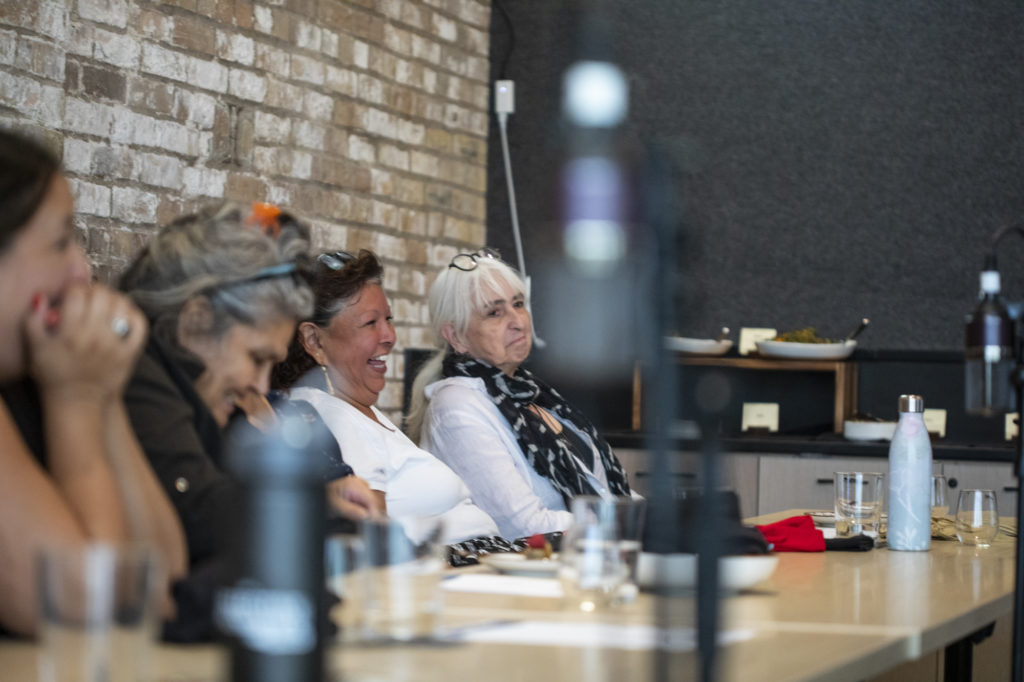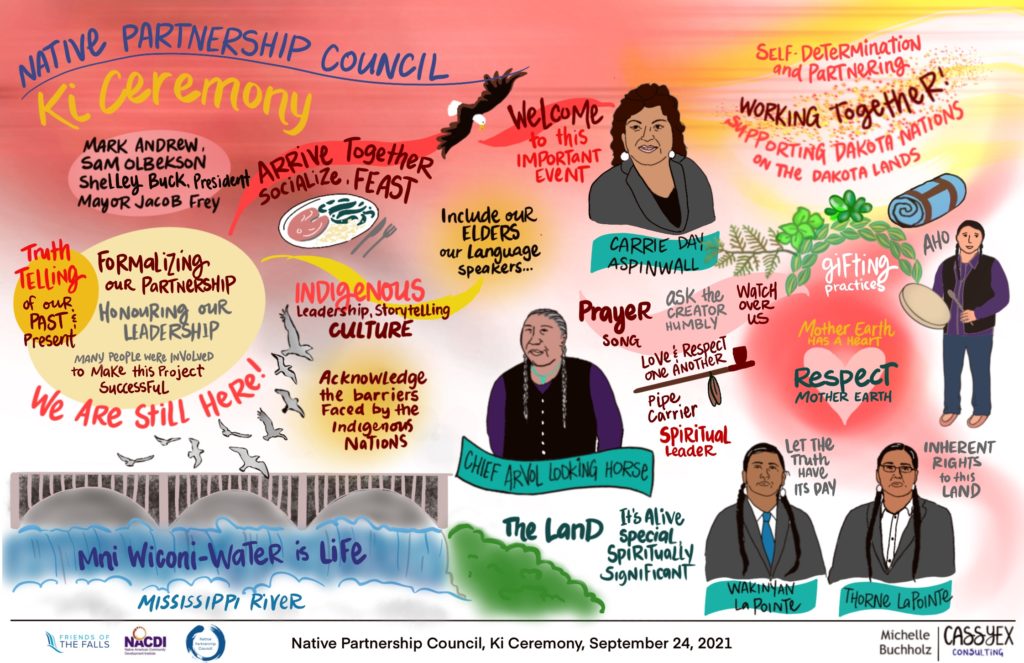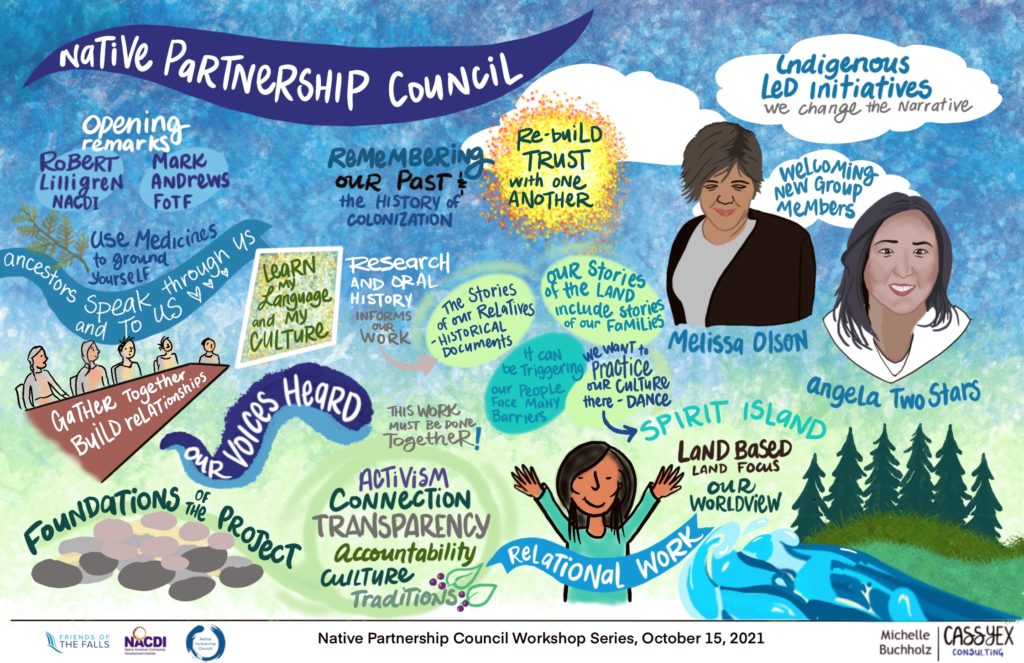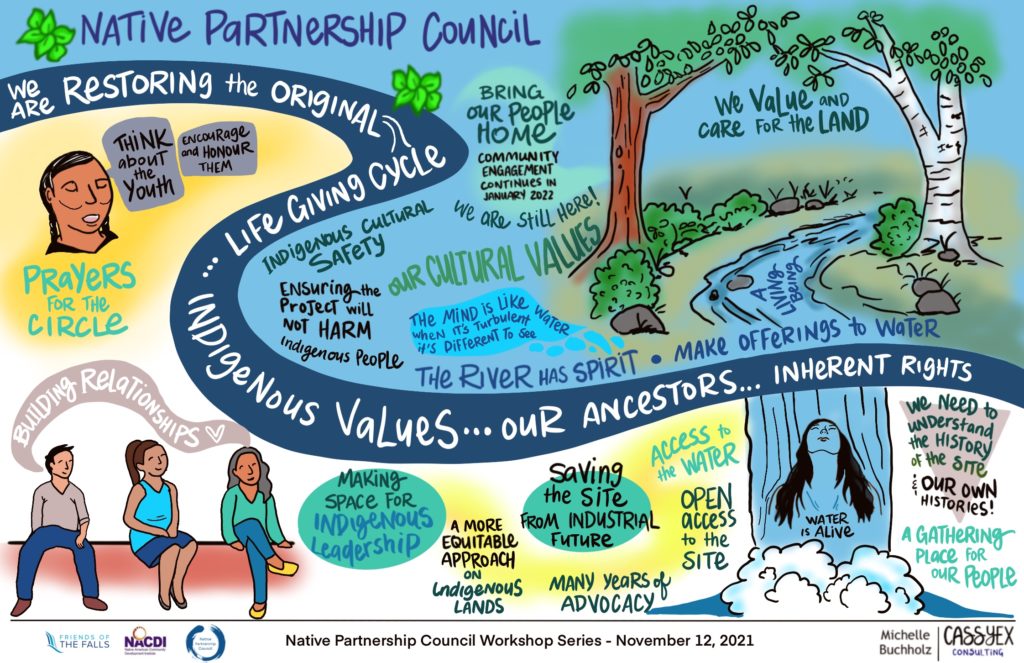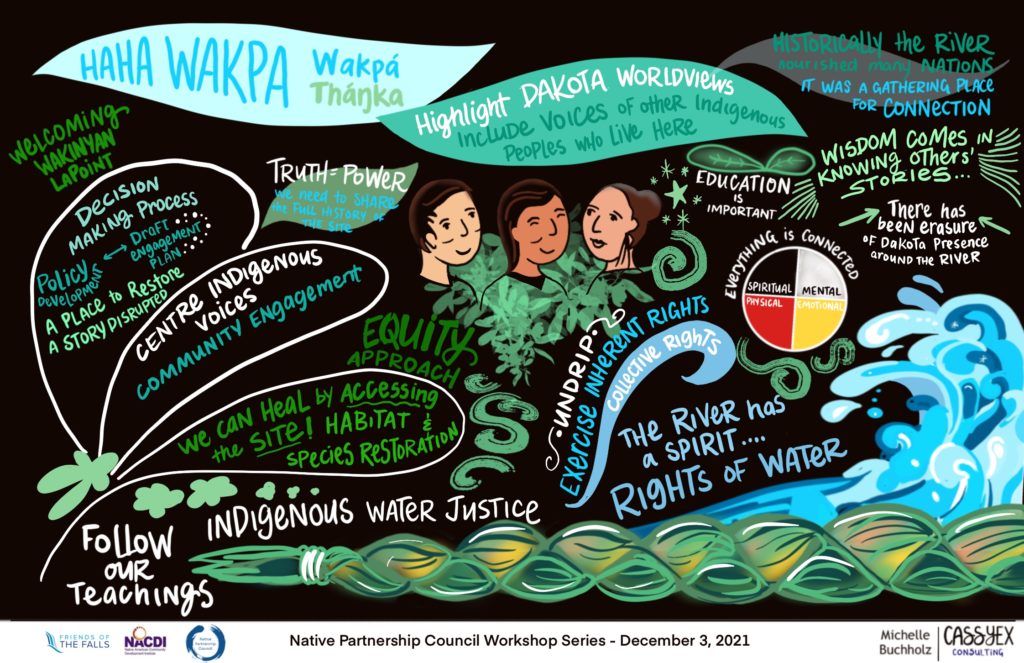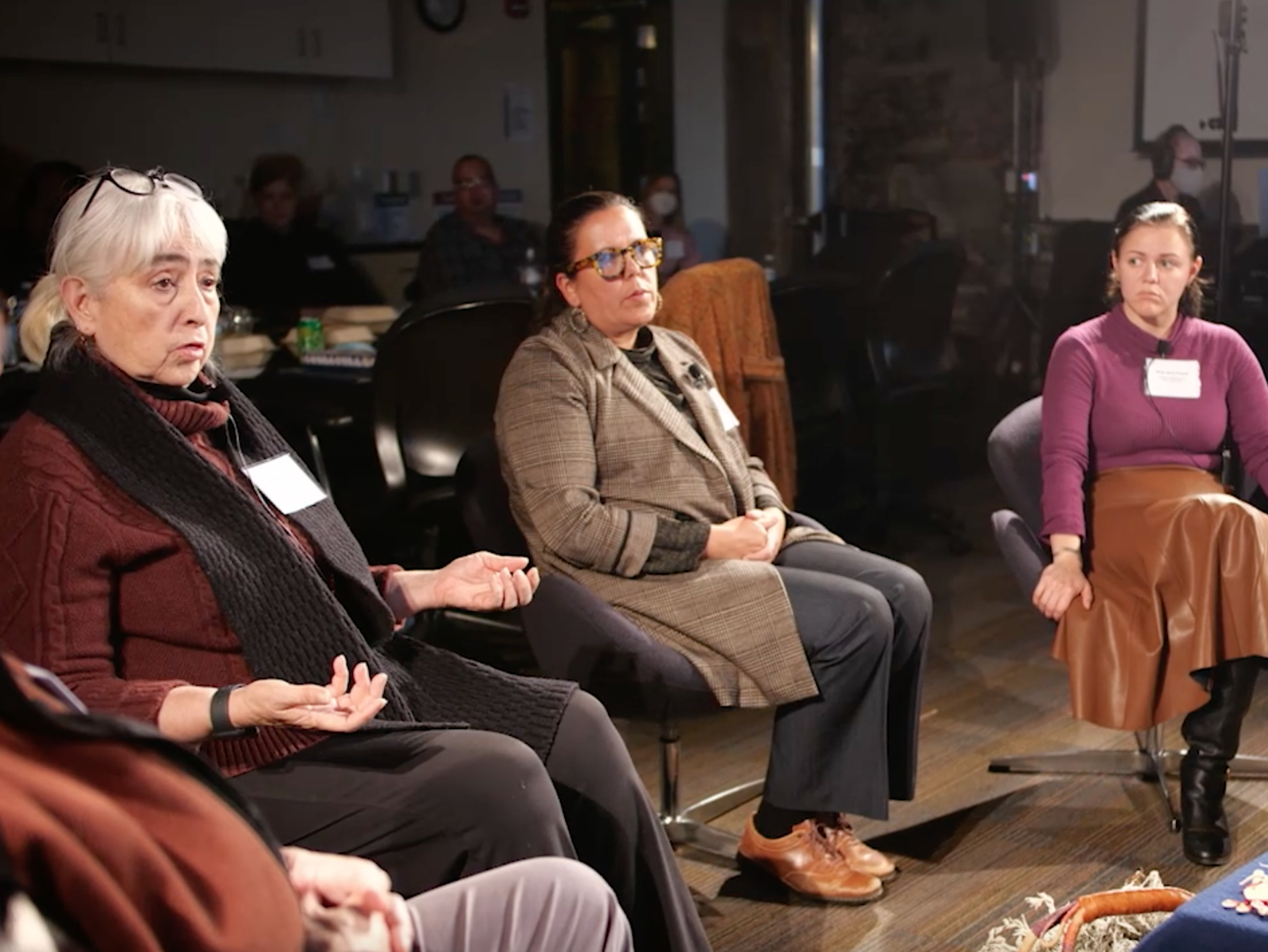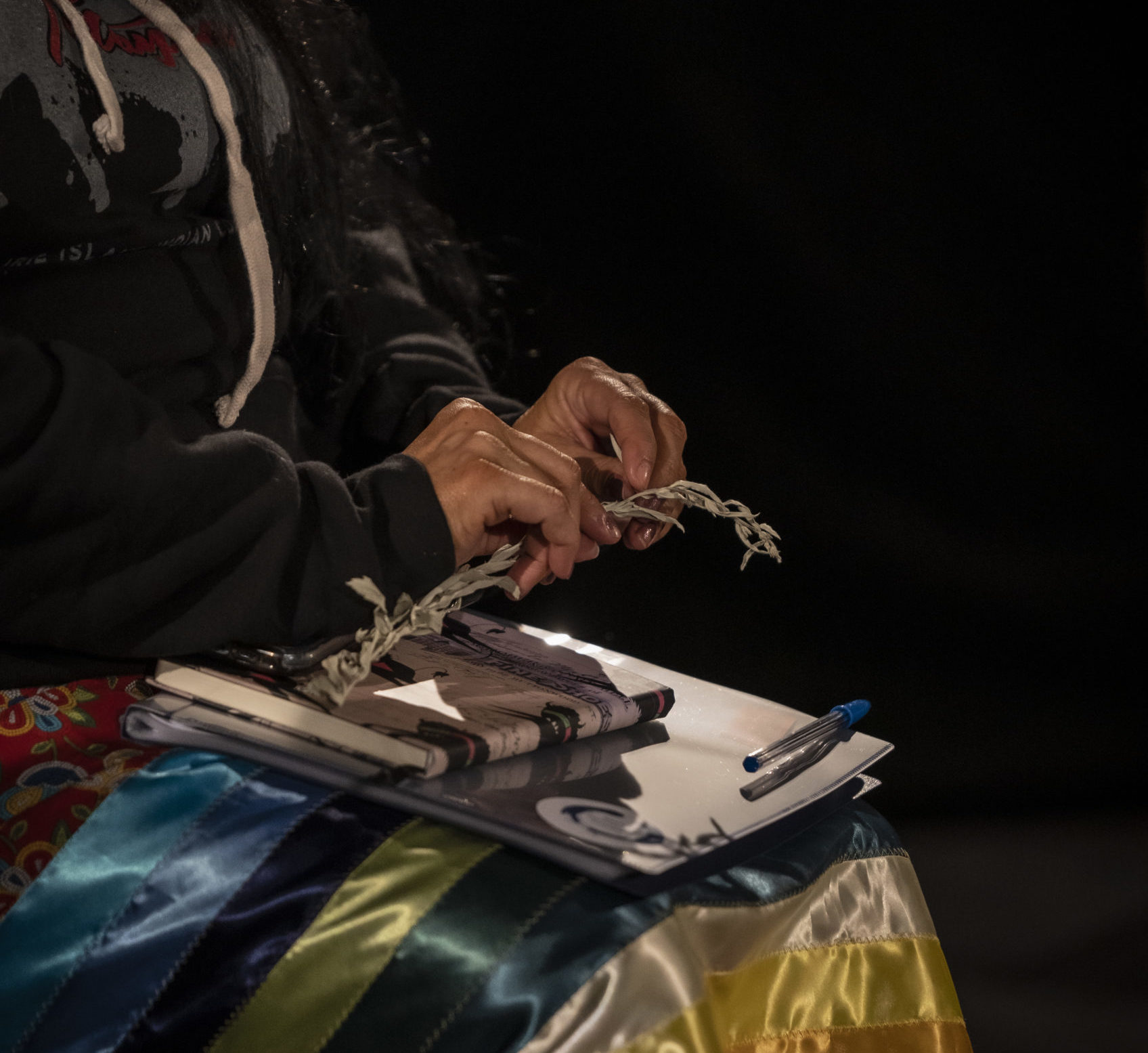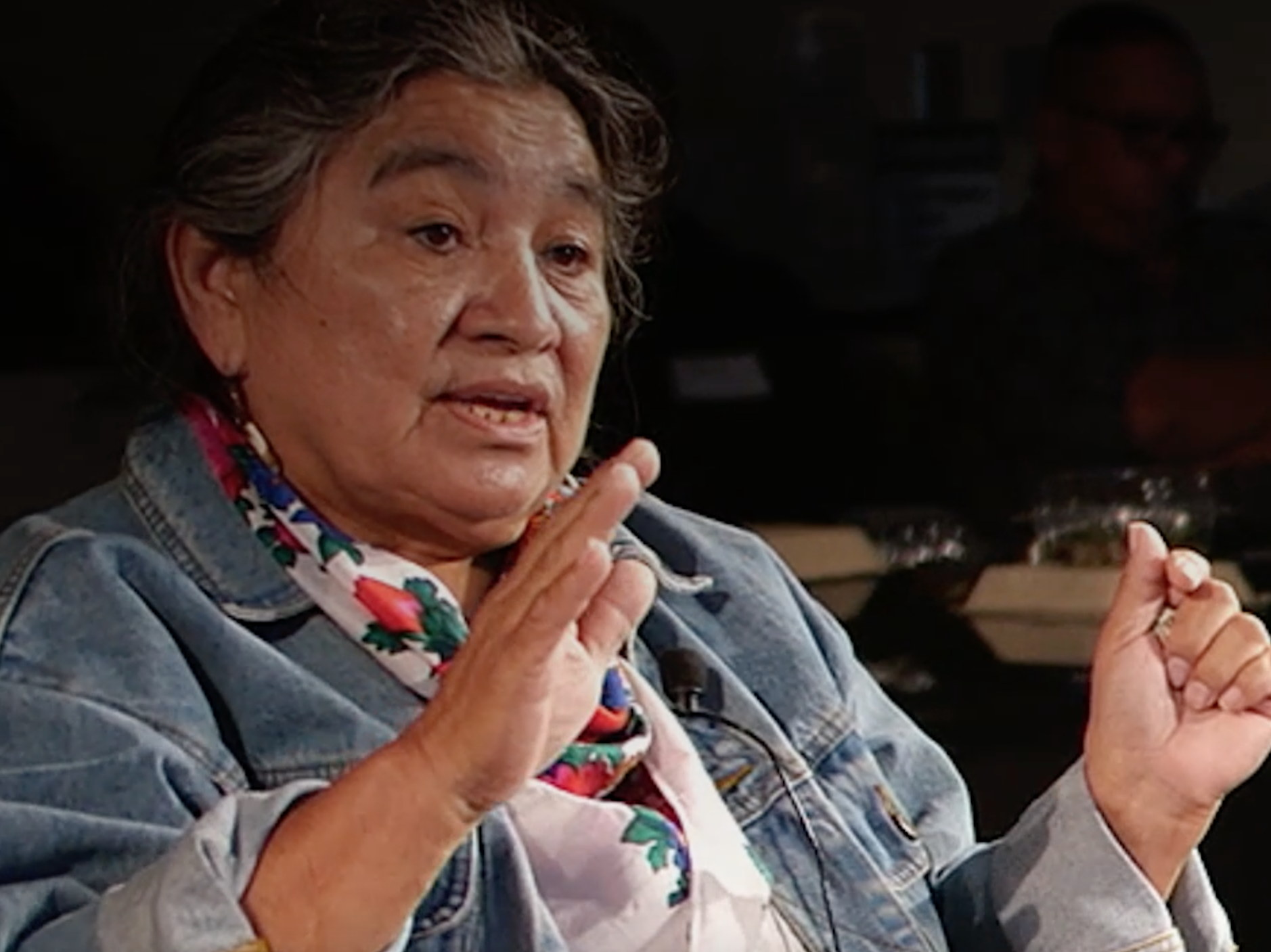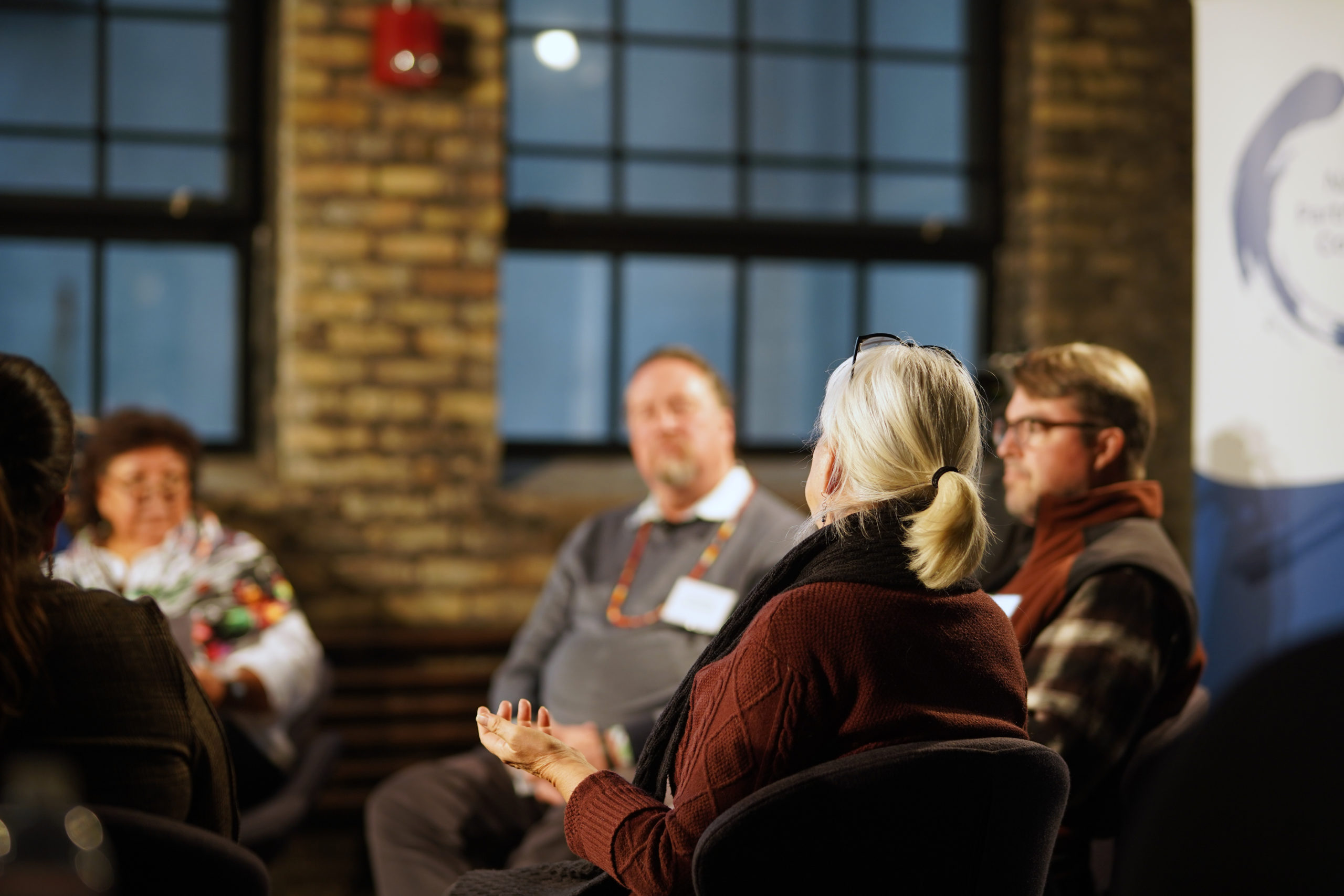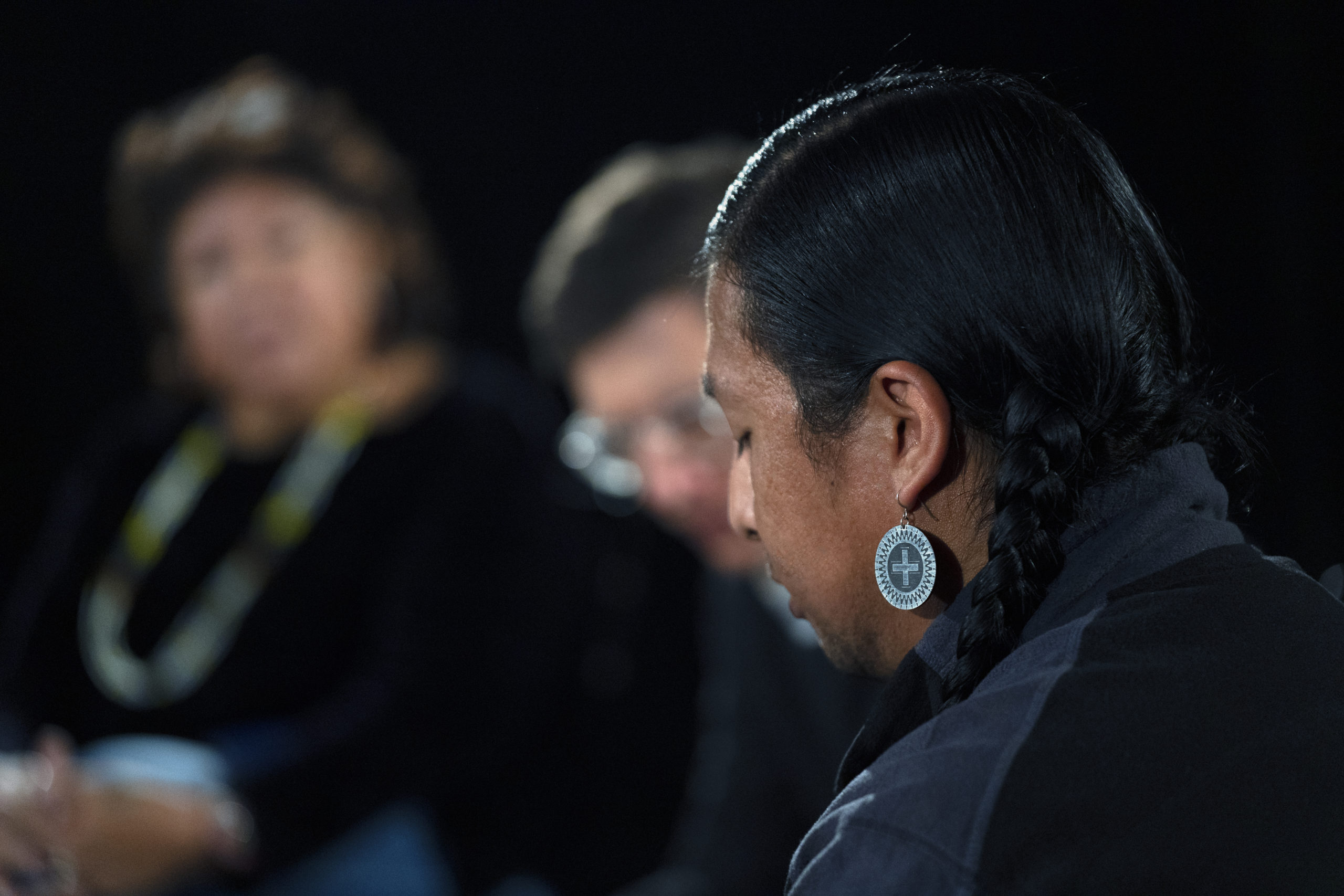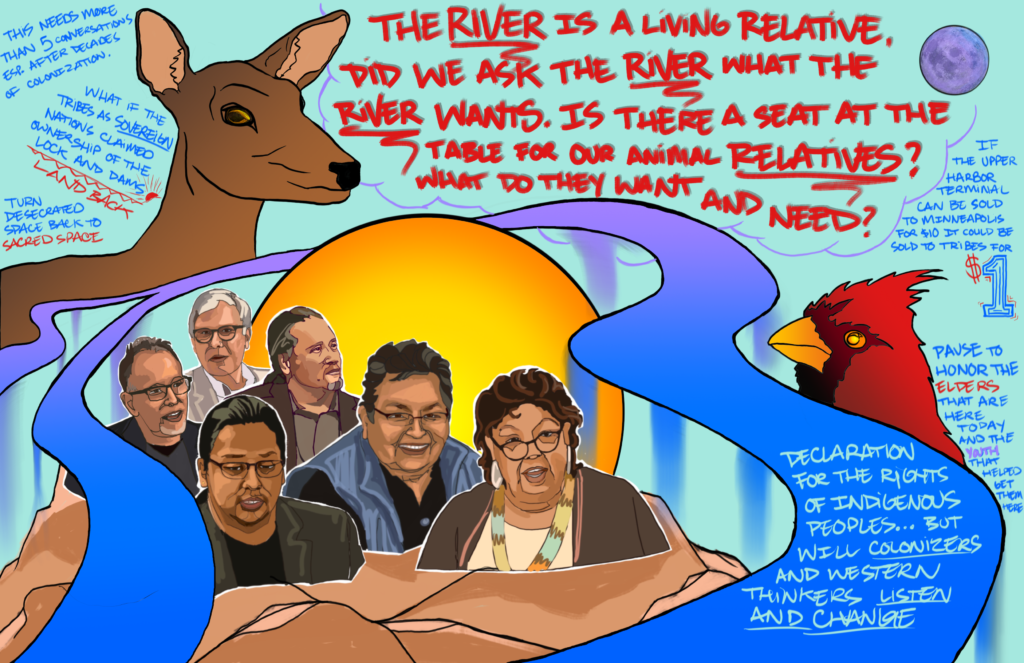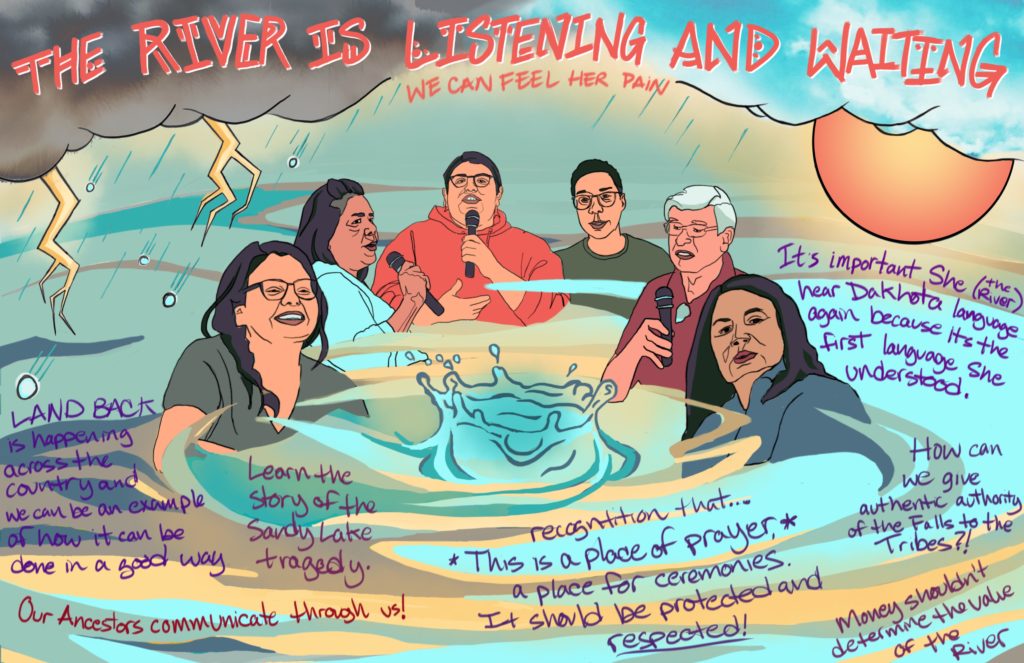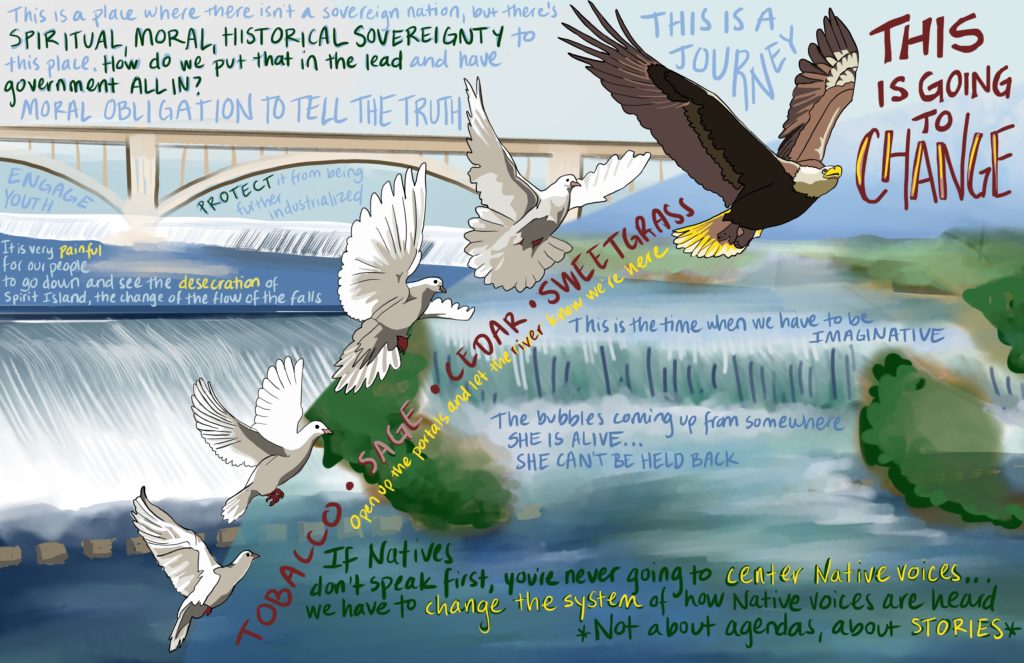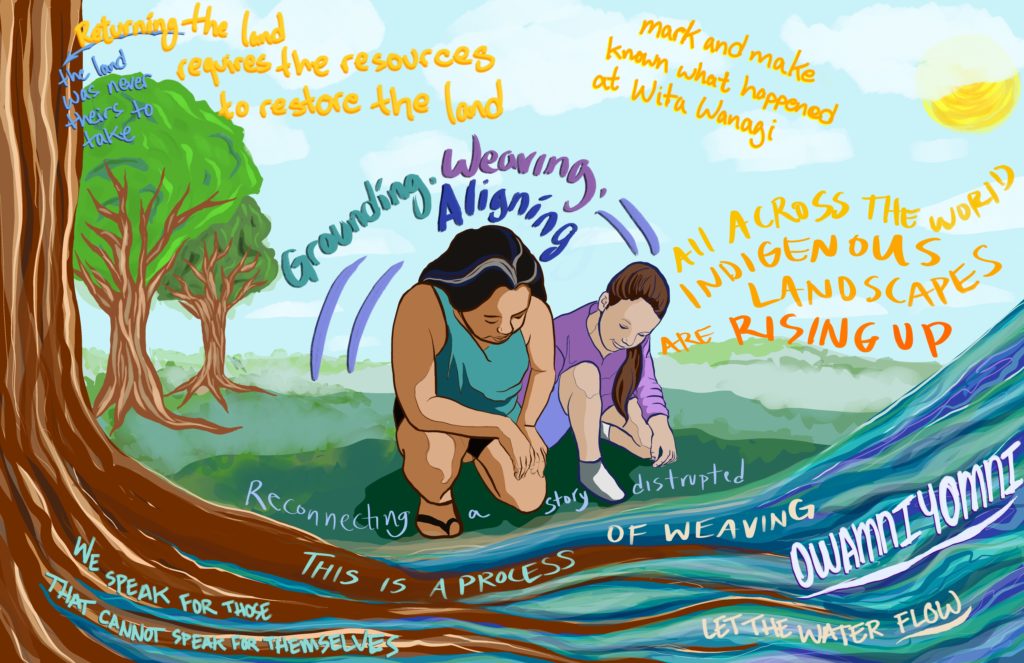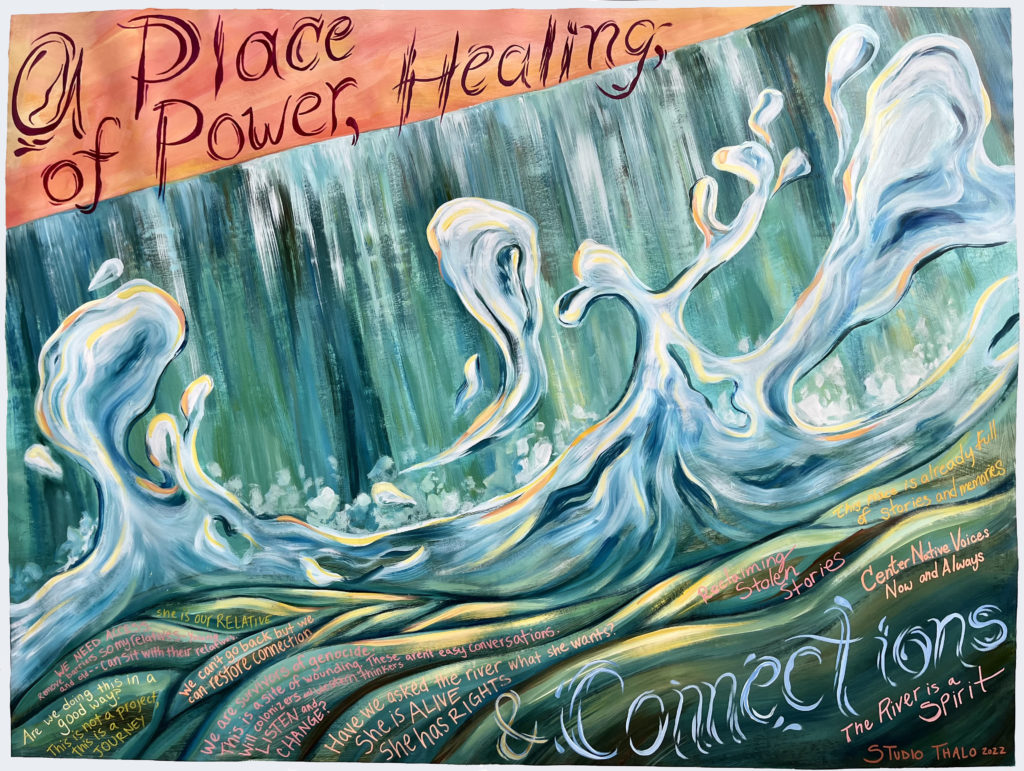The initial meeting of the Native Partnership Council was held in September 2021 in the form of a Ki Ceremony. “Ki” means “to arrive back to where one started, to return” in the Dakota language.
At the beginning of each gathering, we’d smudge and recognize that the River has a spirit which we must honor and respect; she is the life vein of our Mother Earth. The Council then met in a circle, a place where all are equal and each voice has its place. Here, they shared thoughts and stories about the Falls. Members responded to questions like:
- How can we look at this place through the lens of tribal history?
- What is your personal history with this place? Do you have family stories related to the River?
- In what ways has this history been hidden or erased? Are there ways it is still visible?
- How do we define the site’s significance?
- How do our people experience the River today?
These prompts led to powerful conversations about familial trauma, personal identity, tribal history, and cultural values. Native Partnership Council members also advocated for those who cannot speak for themselves. They spoke powerfully about the lasting impacts of genocide, industrialization, and commercialism on all of our relations – the River, the four-legged, the fish, the winged.
At the heart of all discussions was the River – a living spirit and mother of life. The Council challenged us to consider what the River wants, what can be learned from the water itself, and what would happen if this living force could flow as she wanted again.
Rather than record traditional meeting minutes, we documented early Native Partnership Council gatherings in a way that aligns with Native culture and traditional practices. Michelle Buchholz, a Wet’suwet’en artist who leads Cassyex Consulting, bore witness to Council sessions and created graphic recordings depicting key stories and themes.
